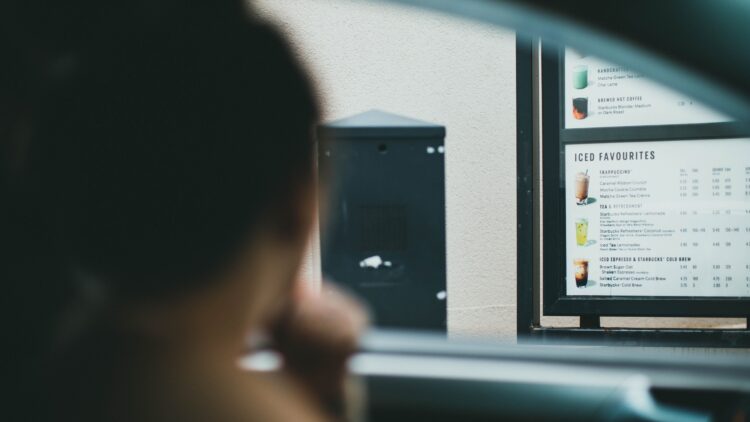There are a bunch of weird things we see happening every day that seem to defy explanations. Like, why would someone leave a cowboy boot on a fence ? Why do cops always touch a tail light when they pull a car over ? Why can’t we s mile in passport photos ?
Rest assured, there are actually good reasons for all of the above. So, let’s tackle another weird sight: drive-thru workers putting metal sheets out their windows.
Usually, in a drive-thru exchange, the only things passing through the window are food and money.

It’s not like it’s a complicated transaction, and it’s one that happens roughly a gajillion times a day, and the vast majority of us just take our food and drive off without ever thinking of it again, provided our order is correct.
But some people noticed drive-thru workers doing this, and wondered what was up with that.

It’s a great question: why the heck would a drive-thru worker put a metal sheet out the window after serving customers?
As someone who worked a drive-thru for over a year, I couldn’t have even hazarded a guess. It definitely wasn’t common practice where I worked.
But it’s not an isolated incident, either.

As this still indicates, workers have been doing this for some time, and it’s been happening pretty regularly.
So, what’s it all about? What purpose could dangling a metal sheet out a window possibly serve?
According to another drive-thru worker, it’s all about metrics.

As @the_knight_danger , who says he used to work at a Tim Hortons drive-thru explained, it’s a way for the workers to game the system of one of the major ways their performance gets measured .
“They’re cheating the system because the system is designed in a way where you have to [cheat it],” he said.
Drive-thru workers are largely graded on how long it takes to serve customers, on average.

And drive-thru lanes use sensors to detect both when cars approach, so workers can take their orders, and when they drive off, so they know when the transaction is complete.
What will set off those sensors at some drive-thrus? A metal sheet.
So, why would a drive-thru worker want to set off the detectors, anyway?

As @the_knight_danger explained, using speed alone as a measurement of job performance isn’t really fair to drive-thru workers. Yes, it’s important, but it doesn’t tell the whole story, or take into account a variety of factors.
When corporate bosses set out service time targets, they tend to use a model of a “perfect customer,” @the_knight_danger says.

But of course, that doesn’t really exist in real life. Lots can happen at a real window to slow things down: customers looking for change, changing their orders at the window or adding on an upsell, and simply the size of the order can have an impact.
“It also doesn’t weigh the size of the order for the duration of the wait. It’s an average so to it, 1 drink is the same average as a bus full of people,” @the_knight_danger said.
And as he also noted, speed doesn’t equate with good service.

“They also don’t account for the people that work in those kinds of stores and want to make people feel human and have even just a short conversation with them,” he pointed out.
So, drive-thru workers will use that metal sheet to bring down their average service times to make things seem a bit more fair.
It’s worth noting, however, that @the_knight_danger only has experience with Tim Hortons drive-thru, so this might not apply to all fast food restaurants.
What do you think? Let us know in the comments!

















































